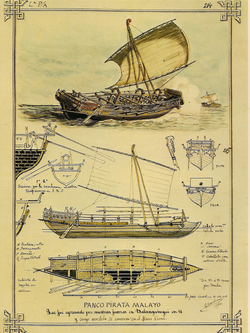This article needs additional citations for verification .(August 2025) |
| Total population | |
|---|---|
| 84,000 [1] | |
| Regions with significant populations | |
| Bangsamoro, Zamboanga Peninsula | |
| Languages | |
| Banguingui language, Tausug, Zamboangueño Chavacano, Cebuano, Filipino, English, Malay | |
| Religion | |
| Predominantly Islam | |
| Related ethnic groups | |
| other Sama-Bajau people, other Moros, Lumad, Visayans, other Filipino peoples, other Austronesian peoples |

Banguingui [a] [b] is a distinct ethnolinguistic group native to Balanguingui Island but also dispersed throughout the Sulu Archipelago and southern and western coastal regions of the Zamboanga Peninsula in Mindanao, Philippines. [2]